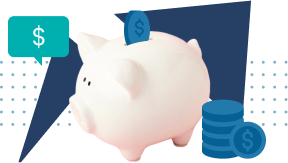What is the Capital Asset Pricing Model (CAPM)? was originally published here.
Q3 2020 hedge fund letters, conferences and more
Definition of Capital Asset Pricing Model
- CAPM is a model used by investors to estimate the expected return of an asset.
- It helps an investor understand what to expect to earn in relation to the risk-free rate and the market return.
- CAPM assumes that the minimum a rational investor would earn is the risk-free rate by buying the risk-free asset.
- If an investor moves money from the risk-free asset into the stock market, they should expect to earn a return in excess of the risk-free rate, what is called an equity risk premium.
- When an investor buys a particular security, they consider the risk of that security relative to the riskiness of the overall market and adjust the equity risk premium up or down by using Beta.
- Beta is a multiple used to adjust up (Beta > 1) the equity risk premium if a stock is expected to be riskier than the market, and down (Beta < 1) if the stock is lower risk than the market.
What Impacts the Capital Asset Pricing Model?
- Investments are exposed to two types of risk: systematic and unsystematic.
- Systematic risks are uncontrollable market risks due to unavoidable external factors.
- Systematic risks include interest rates, economic fluctuations, political unrest, pandemics, etc.
- Unsystematic risks are risks specific to a particular stock, which is why they are also called, company-specific risk. These risks can be reduced through the diversification of a portfolio.
How Do You Calculate the CAPM?
- The formula for CAPM is the risk-free rate plus beta multiplied by the market risk premium, which is the difference between the expected return on the market and the risk-free rate
E(r) = Rf + ?(Rm – Rf)
(Where R(e) = expected return on an investment, Rf = risk-free rate, Rm = expected return of the market, ? = beta of a stock)
- Beta ?
- The beta measures the sensitivity of a stock in relation to changes in the market.
- The beta indicates the required amount of compensation for any increase in investment risk.
- A portfolio of stocks with high beta is more sensitive to changes in the market, indicating a higher expected return.
- A portfolio of stocks with low beta is less sensitive to changes in the market, indicating a lower expected return.
Why is the Capital Asset Pricing Model Important?
- Investors are able to use CAPM to evaluate their investment’s performance on individual stocks and portfolios in comparison to market performance.
- The CAPM formula is used to calculate the cost of equity, which is crucial in the computation of the weighted average cost of capital (WACC).
The CAPM in Practice
- CAPM implies assumptions such as markets without transaction costs, taxes, etc.
- Investors and fund managers can diversify their portfolios through combinations of stocks based on the expected changes in the market.
- Unfortunately, applying the CAPM is nearly impossible for a few reasons
- First, you cannot just plug in past returns and betas, all inputs must be unknown estimates of the future.
- Second, Beta is impossible to estimate, in fact, our research shows that the Beta to use is NOT the easily calculated historic beta.
- Third, the model uses only one measure of risk, Beta, yet we know there are multiple factors that can determine the risk of a stock.
- Fourth, the calculation of beta considers variance as the sole measure of risk, however, to a typical investor, the variance is not necessarily a risk.
Join the Bootcamp for Valuation!
The Valuation Master Class is the complete, proven, step-by-step course to guide you from novice to valuation expert.
Save with coupon code: get-smarter
Click here to learn more and register.
Article by Become A Better Investor













